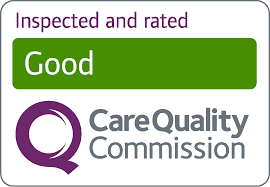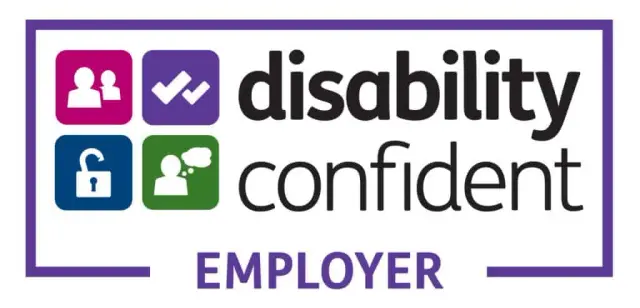Carbon Reduction Plan, in Line with PPN 06/21
Prepared for MediServices Healthcare Ltd, by Christine Mozzamdar, Chief Operating Officer, 21/05/2025.
Our Commitment to Reducing Carbon Emissions
MediServices Healthcare (MediServices hereafter) are committed to continually reducing the carbon emissions associated with its business practices and activities. This carbon reduction plan outlines the company's baseline emissions and sets out targets and actions for reducing emissions in line with their 2050 Net Zero commitment. This plan will be reviewed annually and updated accordingly with year-on-year carbon emissions data and updates on carbon reduction activities.
Net Zero Commitment
MediServices is committed to achieving Net Zero emissions by 2050.
In-scope Emissions - What is Included?
In line with Procurement Policy Note PPN 06/21; 'Taking account of Carbon Reduction Plans in the procurement of major government contracts' (PPN 06/21 hereafter), this carbon reduction plan focuses on the recording and reporting of the following emissions:
- Scope 1 emissions from activities owned or controlled by the organisation, such as fuel combustion in company-owned or -controlled buildings and vehicles.
- Scope 2 emissions associated with the consumption of purchased electricity, heat, steam, and cooling. These emissions are a consequence of the organisation's activities but occur at sources not owned by the organisation.
- Scope 3 emissions are indirect emissions that occur throughout a company's value chain, by activities or assets not owned by the company. For the purposes of PPN 06/21, the emissions associated with the following Scope 3 categories are included in this plan: Category 4 - Upstream transportation and distribution Category 5 - Waste generated in operations. Category 6 - Business travel Category 7 - Employee commuting Category 9 - Downstream transportation and distribution
The following in-scope emissions are applicable to MediServices and will be reported within this carbon reduction plan.
| Scope | Category | Source | Data Unit |
|---|---|---|---|
| Scope 2 | Indirect Emissions | Electricity consumption | kWh |
| Scope 2 | Indirect Emissions | Electricity consumed by company-owned electric vehicles | kWh |
| Scope 3 | Upstream transportation and distribution | Deliveries in and out of Greenlands Business Centre | Delivery count |
| Scope 3 | Waste generated in operations | Waste generated at Greenlands Business Centre | Tonnes |
| Consumable items used by clinicians | Tonnes | ||
| Scope 3 | Business travel | Fuel use in employee-owned vehicles | Miles |
| Well-to-tank emissions associated with fuel use in employee-owned vehicles | Miles | ||
| Scope 3 | Employee commuting | Commuter mileage | Miles |
| Well-to-tank emissions associated with commuter mileage | Miles |
The following scopes and categories are not applicable to MediServices business activities, and as such, no emissions will be reported within this plan:
- Scope 1 emissions - MediServices does not directly emit greenhouse gases from sources that it owns or controls. There is no on-site fuel combustion at the Head Office (i.e. no gas boilers) and the company does not own or operate vehicles that burn fossil fuels.
- Scope 3 Category 9 - Downstream transportation and distribution. For companies within the healthcare sector, this would include emissions associated with delivery of prescriptions and test results, or samples sent from a clinic. MediServices send all results electronically, and therefore this category is not applicable.
Baseline Emissions
Baseline emissions are a record of the emissions that have been produced prior to the introduction of any strategies to reduce emissions. Measuring an emissions baseline or base year will help MediServices to set meaningful and realistic reduction targets.
"For a target to be credible, it must be transparent how target emissions are defined in relation to past emissions."
MediServices will calculate their carbon footprint each year and compare progress against the baseline year, to make sure they stay on track to reduce emissions in line with their commitment.
The baseline year set by MediServices is January - December 2024. Baseline emissions for 2024 are given below in Table 2.
| Scope | Total Emissions (tCO₂e) |
|---|---|
| Scope 2 | 9.5 |
| Scope 3 | 51.8 |
| Total | 61.4 |
Current Emissions
As this is the first carbon reduction plan established for MediServices, the current emissions are equal to the emissions in the base year (2024), as noted within the "Baseline Emissions" section of this report. This has also been stated below for clarity.
| Scope | Total Emissions (tCO₂e) |
|---|---|
| Scope 2 | 9.5 |
| Scope 3 | 51.8 |
| Total | 61.4 |
In subsequent years," Current Emissions" will be updated to provide emissions for the current year, with comparisons of the previous year's emissions.
Emissions Reduction Targets
As part of MediServices's ongoing commitment to achieve Net Zero by 2050, MediServices has set the following targets for all three emissions scopes.
| Scope | Base Year Emissions (tCO₂e) | Year-on-Year Reduction | Overall Reduction | 2050 Target Emissions (tCO₂e) |
|---|---|---|---|---|
| Scope 2 | 9.5 | 8.5% | 90% | 1.0 |
| Scope 3 | 51.8 | 8.5% | 90% | 5.2 |
The targets have been set in line with Science Based Targets Initiatives' (SBTI) methodology. The SBTi uses the latest climate science to help companies set clearly defined emissions reduction targets. The aim of the initiative is to reduce emissions in line with the Paris Agreement of limiting global warming, to 1.5°C above pre-industrial levels and beyond.
To achieve its 2050 Net Zero target, MediServices aims to reduce its Scope 2 and 3 carbon equivalent emissions by 8.5% annually, until 2050.
Emissions Reduction Initiatives
MediServices continually evaluates its working environment and business practices to identify environmental management measures which minimise its environmental impact and reduce its carbon emissions. This includes encouraging both staff and its supply chain to consider their impact on the environment.
Measures Introduced to Date:
- Between 2022 and 2024, a complete fleet of fully electric company cars was introduced. This has eliminated tailpipe emissions for all company-owned vehicles travelling for business purposes.
- MediServices have rationalised its deliveries of office supplies to Head Office, moving from deliveries on an ad-hoc basis to one delivery per week, when needed. This helps to reduce emissions by minimising wasted miles, optimising vehicle loading and reducing fuel consumption associated with the deliveries.
Future Environmental Management Measures:
- 'Green' energy procurement: MediServices are looking to source electricity from renewable energy providers, suppling energy from sources such as solar, wind and hydro. This supply will be backed by Renewable Energy Guarantees of Origin certificates (REGOs), to validate the renewable source and support the claim of green energy use.
- Regionalisation of services: Regionalisation involves coordinating and delivering clinicians based on their geographical proximity to clinics. This will reduce long-distance travel by staff and reduce transportation-related carbon emissions.
- A salary sacrifice scheme to encourage the uptake of new hybrid or fully electric grey fleet vehicles, to replace petrol and diesel alternatives.
The above measures will help to reduce the carbon emissions associated with the business practices that take place to fulfil any contract awarded to MediServices.
Declaration and Sign Off
This Carbon Reduction Plan has been completed in accordance with PPN 06/21 and associated guidance and reporting standard for Carbon Reduction Plans.
Emissions have been reported and recorded in accordance with the published reporting standard for Carbon Reduction Plans and the GHG Reporting Protocol corporate standard and uses the appropriate Government emission conversion factors (DEFRA 2024) for greenhouse gas company reporting.
Scope 1 and Scope 2 emissions have been reported in accordance with SECR requirements. The required subset of Scope 3 emissions has been reported in accordance with the published reporting standard for Carbon Reduction Plans, and the Corporate Value Chain (Scope 3) Standard.
This Carbon Reduction Plan has been reviewed and signed off by the board of directors (or equivalent management body).
| Role | Name | Signature | Date |
|---|---|---|---|
| Director / Senior Manager | Christine Mozzamdar |  | 22nd May 2025 |
Appendix A – Estimations and Methodologies
Electricity Consumption
Where supplier invoices were available, invoiced electricity consumption (in kWh) has been used to calculate associated Scope 2 emissions. Where invoices were not available: the following estimation methods have been applied:
- Meter reads have been used to calculate consumption between two given dates. Monthly consumption has then been calculated using the average daily consumption and multiplying the average by the number of days in each month.
- Average consumption (in kWh) per m² of occupied floor area has been calculated. This figure has then been multiplied by the floor area for which there is no invoice data.
Company Car Travel
Where odometer readings were available, these have been used to calculate annual mileage. In the absence of odometer readings, annual mileage allowance (as specified by the lease) has been used.
Travel in Employee-Owned Vehicles
Mileage in employee-owned vehicles has been extracted from expenses claims for the 2024 year.
Employee Commuting
Commuter mileage has been calculated based on the following information per commuting employee:
- Round-trip distance
- Mode of transport
- Vehicle fuel type
- Number of commutes per week
Waste
Waste generated at Head Office
The amount of waste generated by MediServices has been calculated based on:
- Total waste generated by all units within the building (in tonnes) - Calculated using maximum bin capacity multiplied by number of collections annually.
- Waste generated per m² of lettable office space - Calculated by dividing total waste generated (as above) by total lettable floor area.
- Floor area of office space let to MediServices.
Clinical Waste
The amount of waste generated by clinicians was calculated using the following:
- Inventory of consumables - Provided for three months of a year and extrapolated to estimate consumables use in a full year.
- Weight per consumable - Based on desk research.
Deliveries in to and out of Head Office
The number of deliveries in and out of Head Office has been taken from accounts data taken from all major delivery companies used by MediServices. Where a full year of accounts were not available, the available figure has been extrapolated to represent a full year. Emissions have been calculated using Royal Mail's published figure for emissions per delivery.2
2 Reference to Royal Mail's sustainability page.
Conversion Factors
The following conversion factors, taken from the UK Governments GHG Emissions Factors 2024, have been used to convert activity data into emissions:
| Unit | kgCO₂e per unit |
|---|---|
| Electricity (kWh) | 0.207 |
| Medium sized EV (miles) | 0.068 |
| Average vehicle, unknown fuel (miles) | 0.269 |
| Average petrol vehicle (miles) | 0.265 |
| Waste to incineration (tonnes) | 6.411 |
Clinical Governance
MediServices Healthcare continuously strives to uphold an excellent standard of service.
Led by our Medical Director, our clinical governance committee ensures that the quality of all services is continually monitored and reviewed.





